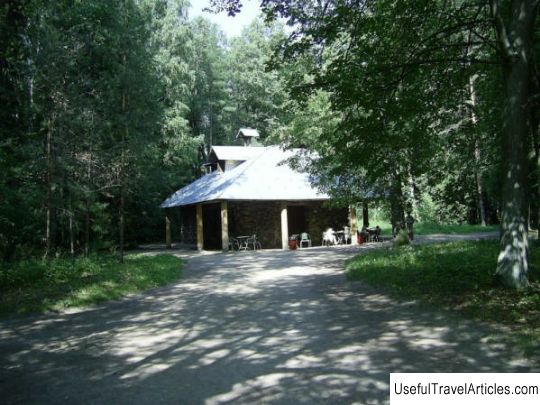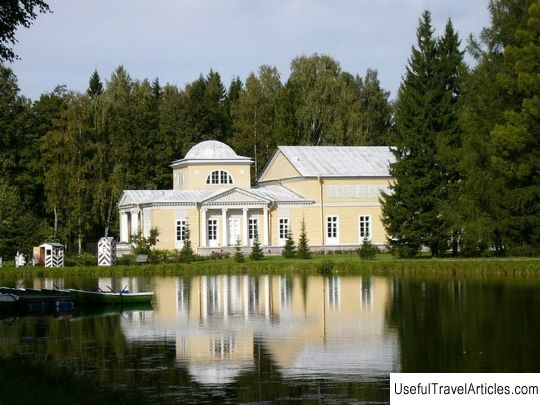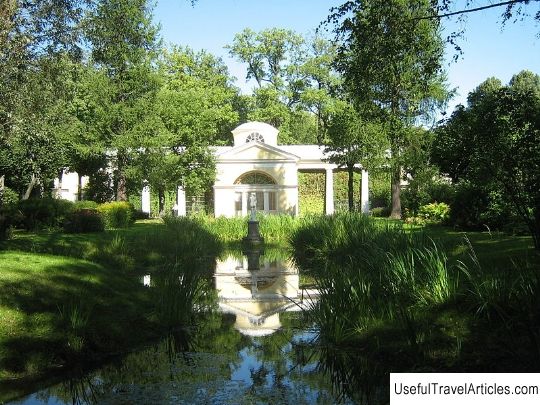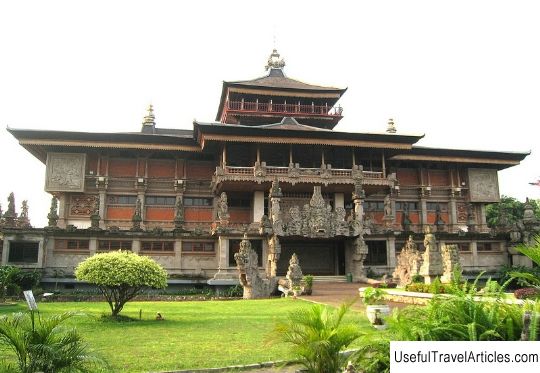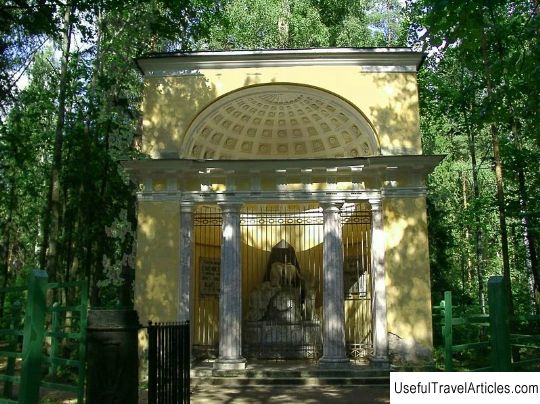Dairy house in Pavlovsky park description and photos - Russia - St. Petersburg: Pavlovsk
Rating: 8,0/10 (1232 votes) Dairy house in Pavlovsky park description and photos - Russia - St. Petersburg: Pavlovsk. Detailed information about the attraction. Description, photos and a map showing the nearest significant objects. Photo and descriptionThe Dairy House (Dairy) was built in 1782 by the architect C. Cameron in the "Swiss style". It is similar to the Dairyman's plan of the Duke of Wurttemberg. The plan was sent personally by Maria Feodorovna from a trip abroad in Europe. In a letter to K.I. Kuchelbecker (director of Pavlovsk) A.L. Nicholas, who was at that time the secretary of the empress, in addition to the Milk milk plan, was written about Maria Feodorovna's wish where to place her. She wanted the house to be in a remote corner of the park, on the shore, so that the cows could go straight from the barn into the forest, and that it was well hidden so that it would not be possible to guess about it until you were near it. Cameron took these wishes into account. And in our time, an unexpected meeting with the Dairy House causes constant delight among the guests of the park. The walls of the Dairy are massive, made of bricks, faced with cobblestones on the outside. The foundation is very low, the roof was once covered with thatch, with a wide canopy that rested on tree trunks. According to Cameron's idea, a wooden staircase was made on the northern facade of the building, leading to the attic, where hay was stored in the 18th century. There was a bell shed on the ridge of the roof. The dairy was in line with the fashion of that time for rural buildings and was very versatile in its purpose. It had: a dining room and a guest room for receiving guests, a separate room for an employee who served the Dairy, a kitchen for preparing dishes from milk, a smaller part was reserved for a barn, which housed 6 cows. All the rooms inside were plastered and whitewashed. The kitchen was tiled with stone flooring. A Russian stove was set up here, which served both for milk processing and for heating the Milk House. The cellar was used to store food. To this day, the projects of the interior decoration of the Dairy have not been preserved, with the exception of two sketches by the artist and architect Camporesi. They have an image of the painting of the dome of the living room and the decoration of one of the walls of the same living room. But whether the dome was painted is unknown. This topic is still controversial among researchers. And although the living room before the war had a domed ceiling, no painting was found on it or on the walls. This is confirmed by the descriptions of the Dairy House. From the same documents, you can learn that along the walls of the guest room were placed shelves for collectible porcelain: Japanese, Chinese, Saxon, Dutch. Jugs, vases, flower beds, cups, saucers - 75 items in total. This collection gave the room a chic, elegant look, creating a tangible contrast to the emphatically rough exterior of the building, stylized as an old abandoned rural farmhouse. One of the favorite entertainments of the 18th century were trompe l'oeil pavilions, which included the Dairy. In connection with the increase in the number of livestock, a separate barnyard was built for him, located further from the palace. Small livestock was housed in the Dairy House. From the inventory of 1801, there is information that stables for sheep were made here. At the beginning of the 19th century, the poultry house and farmyard moved to the village of Glazovo. A Farm was built here for them. The dairy, having lost its former purpose, was turned into a park pavilion. They were still treated to dairy products in the living room, that were brought here from the Farm. After the revolution, the Dairy House was converted into housing for the workers of the palace and park administration. During the Great Patriotic War, the pavilion was destroyed. After the war, it was renovated. It can be said that it served as intended: a stable for the horses of the palace and park leadership. There were ideas to use the building to organize temporary exhibitions. Throughout its long history, the Dairy House burned more than once, both before the revolutionary events and after them. The last fire took place in 1991. After him, the pavilion was restored.      We also recommend reading Basilica of Santa Maria dei Servi description and photos - Italy: Bologna Topic: Dairy house in Pavlovsky park description and photos - Russia - St. Petersburg: Pavlovsk. |
